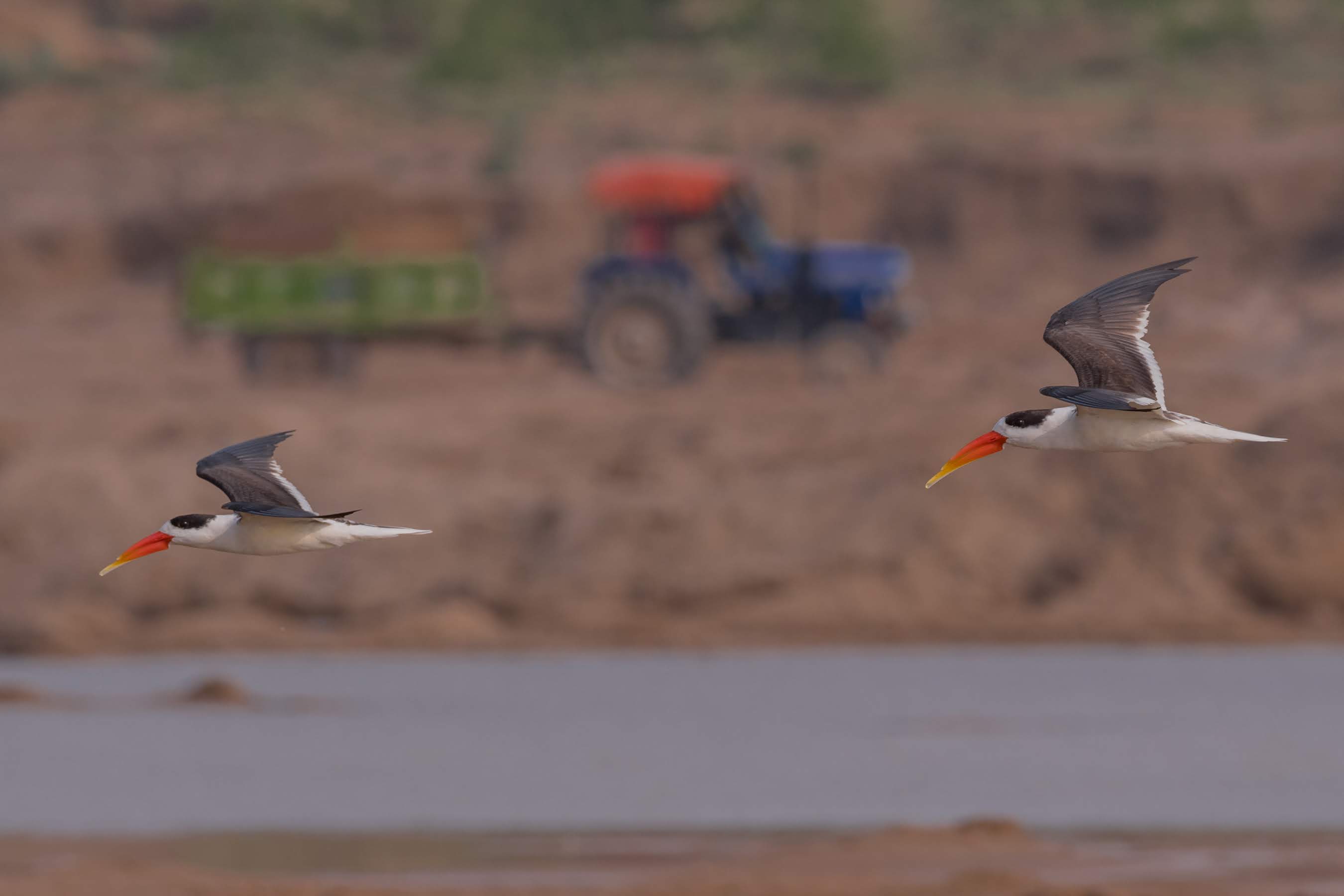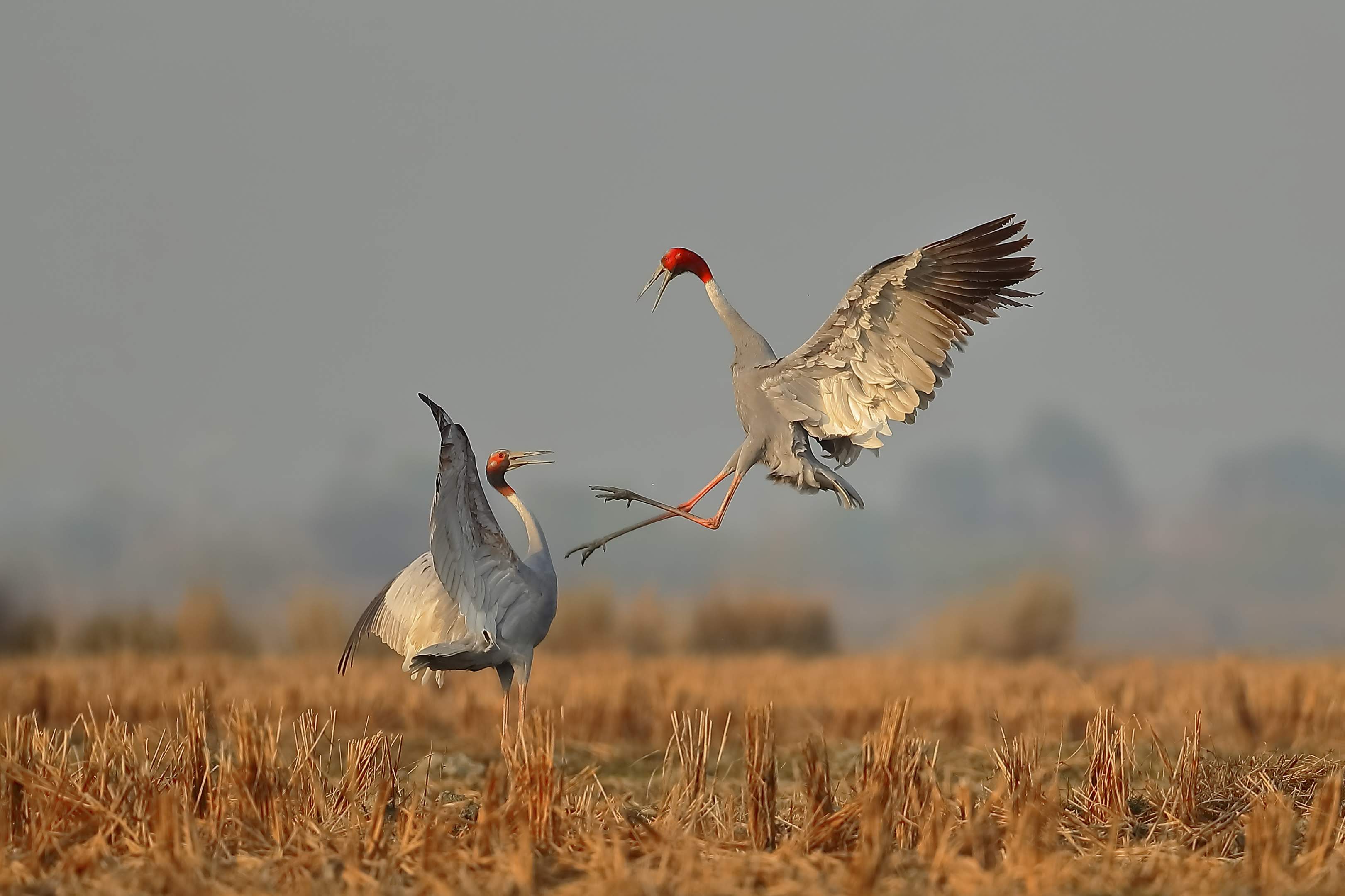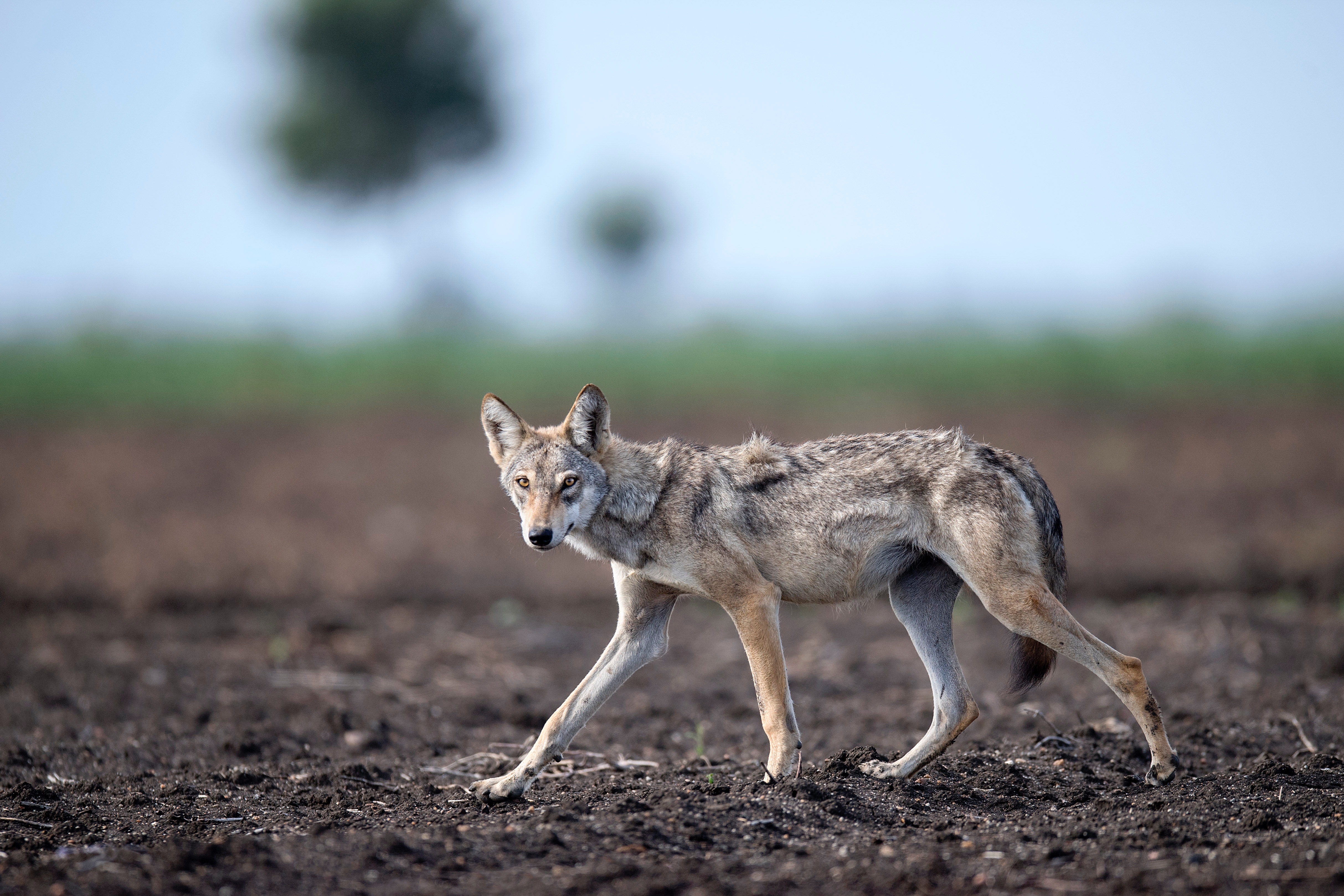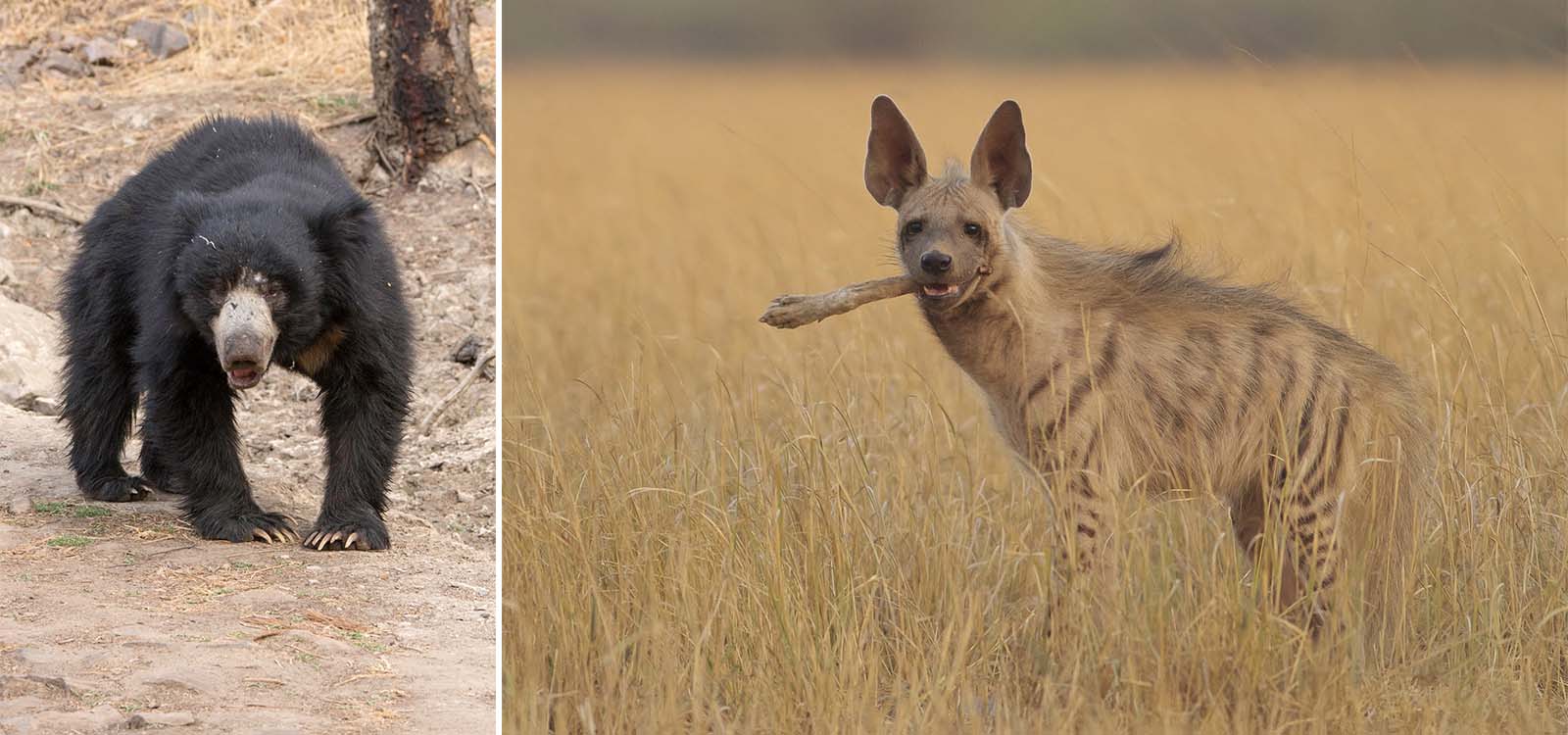Bandits, Badlands, and Biodiversity
First published in Sanctuary Asia,
Vol. 40
No. 12,
December 2020
By Priya Ranganathan
River of bandits, haunt of dacoit queens, she is fearless and wicked in her glory. She carves a path through high ridges, forming a honeycomb of ravines where wolves and hyenas roam. The howl of the jackal is her night song, the drill of sand miners her day accompaniment. The source of life in an arid landscape, she holds secrets that none dare to unearth. In the erratic monsoon, she is explosive, reaching far into the sandy soils and uprooting lives. In the dry season, she is a mere trickle, a shadow of her monsoonal glory.
She is a river that does not like to be tamed. Where she is trapped, she wriggles through the porous soil to feed her many tributaries, and eventually joins the mighty Yamuna. Her banks are the haunt of tigers, sloth bears, hyenas, wolves, jackals, blackbuck, chinkara, and her waters are home to gharial and mugger crocodiles. This is a river of mischievous intent. This is a river of ghostly laughter and grim tales. She is sensual in her winding path, in her palatial labyrinth of ravines.
Home to the famed Bandit Queen Phulan Devi, the Chambal is as spirited as the lady who once commandeered her banks. She flows northeast, originating in the Vindhyas of Madhya Pradesh and draining a vast section of that state and Rajasthan before joining the Yamuna in Uttar Pradesh. But the Chambal is unlike the other rivers of the Indian extra-peninsula. Her channel cuts a unique path through some of the harshest terrain in the country and paints a bloody history across time.
This is a cursed river, you see. The ancient Mahabharata speaks of a river that runs endlessly red with the blood of slaughtered cows, long revered by Hindus, at the hands of the Aryan King Rantideva. Thus came about her other name – Charmanyavati (she who rises from the blood of a thousand cows). Throughout Indian history, the river is referred to as the Charmanvati – the river on whose banks leather is dried. This duality of name only serves to heighten the superstition and ill-will surrounding this river. Walk along her banks, and locals will whisper about the curse that Draupadi laid upon this river when the Kuru prince Dushyasan attempted to disrobe her at the end of the infamous game of dice. According to local women, those who drink the waters of this wild river are fated to die. This is a river that inspires fear, not reverence or adoration.

Hundreds of resident and migratory bird species frequent the life-giving waters of the perennial Chambal, including these Indian Skimmers Rynchops albicollis. Photo:Trikansh Sharma.
Mining a River
Perhaps it is the inhospitable terrain surrounding the Chambal that has led to her reputation. The Chambal Badlands are named for their poor soil and the lack of vegetation growing here, carved by India’s only cratonic river. Water plays god in this landscape, carving deeply incised ravines that closely surround the banks, providing a unique habitat seen only in a few parts of the country. Strong seasonal contrast and semiarid conditions promote erosion, creating one of the most impressive landforms of India. The Yamuna-Chambal Ravine Zone extends for 480 km. along the Chambal, reaching widths of 10 km. across the channel. Standing in one of these ravines, the sides are steep and soar upwards to level off into scarps that are wide and covered in tufted scrub-shrub vegetation alongside loose topsoil. They plunge to depths of 60 to 80 m., creating an astounding maze of degradation. Walking within these ravines, it is easy to lose your way and find yourself trapped in an endless landscape of steep walls, sandy soil, and blue sky. These unique geomorphological features spread outward from the Chambal’s sandy banks in a dendritic formation, snaking inland as the sand mining mafia drills away at their towering walls.
Sand miners and bandits go toe-to-toe in the history of this rugged landscape. Both groups have eaten away at the peace of mind of local villagers. Mining was outlawed by the National Green Tribunal in 2006, but miners continue to flout the law, often with the support of corrupt government officials, primarily the local police. Carving a living out of the Chambal ravines, miners are the new bandits of this landscape, often silencing those who speak out against their actions. Villagers avoid sand miners too, fearing for their lives and their families. Forest Department officials patrolling the ravines often face aggressive encounters with miners and modern-day dacoits. Wildlife, it seems, must look after itself in this harsh ecosystem.
But as is often the case, a landscape termed “inhospitable” for humans is teeming with life.

Sarus Cranes Antigone antigone form long-lasting bonds and zealously hold on to territories, often displaying dominance by way of leaps and dance-like posturing. The rich biodiversity of the region is threatened by mining, poaching and dams. Photo: Shehzad Ali.
Not So Inhospitable
Just north of where the gentle Banas meets this bandit queen of rivers are a particularly incised series of gullies that are home to some of the rarest wildlife in Rajasthan. I began my forays into wildlife ecology in this wild landscape, forced to explore the ravines on foot as my jeep could not make headway in the narrow curves of this maze. Here, on sandy soil unscarred by tyre marks, one could spot overlapping trails of pugmarks. My footprints were the sole man-made imprints that first day in the Chambal Badlands; it seemed that the ravines were absolutely overrun with the big names in desert wildlife! The padded, rounded pawprints of a tigress (one who would appear on our camera traps later in the monitoring season) and her cubs were a welcome sight, as were the tiny globular pellets of the chinkara, or Indian gazelle. Gazelles are shy creatures, apt to run at the first sign of a human, and I collected my fair share of photographs of their tawny rumps while trying to sneak up on them. The chinkara has plenty of competition in this dry landscape, however; nilgai, or blue bulls, regularly haunt these stretches. The males are a dull bluish-grey, while the females and young are a sedate brown. Sambar and chital, the common forest deer species across India, are rare visitors to the Chambal Badlands, preferring the greenery of the Aravallis and the interior of the Ranthambhore National Park. The Chambal’s banks and gullies are devoid of lush vegetation. The only trees that grow well here are scrubby Acacia bushes and clumps of Prosopis juliflora. However, the Badlands are the original hunting grounds of a wide range of predators.
The tiger, of course, utilises the maze-like ravines when travelling from Ranthambhore to Kuno-Palpur Wildlife Sanctuary across the Chambal and Kailadevi Wildlife Sanctuary to the north. Both patches have source populations of tigers and the ravines hold the key to accessing either patch while avoiding human settlements. Leopards are known to traverse these ravines as well. These adaptable big cats have made themselves at home across nearly every habitat found in India today.
Lesser-known predators have carved their presence into these ravines as well. The Indian wolf, a shy and elusive canid, is often heard in these ravines, its howl reaching through the twists and turns of the sandy escarpments. Coming across their ghostly pugmarks is a treat, almost as much as the sudden sighting of this canid standing high on the escarpment, fur standing on end in the blistering breeze. Far more common is its smaller cousin, the golden jackal. Jackals are scavengers, feeding on the kills of larger predators and often making away with chickens, hare, and prey up to the size of small deer. They are alternately revered and feared by locals; jackals are said to be omens of death and disease, likely due to their close association with decaying organisms. The jackal’s wily nature is well known through fables and mythological tales, both in western India and the larger range of this canid. Clearly, it is wily enough to have coexisted in this rugged landscape alongside other larger competitors for scarce prey.

The Indian wolf is a rarely seen, shy and elusive canid, whose ghost-like howling can often be heard across the ravines. Phoyo: Shailendra Ghorpade.
The Dacoits of Today
Poachers are the modern-day dacoits of the Badlands, difficult to catch in the incised landscape and vicious when cornered by unlucky Forest Department officials. They are aided and abetted by a mix of sand miners and even at times locals; after all, the best poachers are those who have intimate knowledge of the landscape in which they operate. Miners provide poachers with easy transport to and from the river. Large-scale contractors conduct illegal fishing in the Chambal as well, hiring locals to capture large numbers of fish at the risk of local aquatic biodiversity. Two of the prime mammalian targets for poaching along the Rajasthani banks of the Chambal are the sloth bear and the striped hyena. Sloth bears, immortalised by Baloo in Disney’s Jungle Book, are inquisitive creatures with tiny, close-set eyes and long curved claws. Make a sudden appearance in their field of vision and they’ll charge at you faster than a male elephant in musth. Bears prefer the forests of interior Ranthambhore, but I have encountered these shaggy omnivores along the Chambal, where the waters are a cool reprieve after a day of high desert heat. Sloth bear tracks resemble those of humans in size and shape, leading to local lore that bandits in the ravines transform into bears when danger approaches. Another oft-poached species is the hyena, whose cackling call haunts the ravines at night. Hyenas are shy creatures, and while they will often approach human settlements, they do so under the cover of darkness. Villagers often dump carcasses of livestock on the outskirts of their fields, where the hyenas and jackals may feast upon them. Certain tribes bordering the river feed leftover meat scraps to local hyena populations, and the animals respond by rarely attacking livestock or children in these areas. Folklore and deep ties to the landscape play a role in keeping both humans and animals alive in the Chambal Badlands. This is a land where mercy is hard to come by.
It is also a land where lawlessness is the driving principle. Where law fails to have a stronghold, the efforts of the Forest Department are futile. Here, along the banks of this bloodied river, conservation is more a lifestyle than an enforced habit. Feuds between different castes make it difficult for conservation stewards to operate in this region; our research was frowned upon by villagers, who had little trust in people who claimed to care about wildlife for a living. People here are used to a hard lifestyle, and while they coexist with wildlife, they also do not necessarily put aside time or energy for saving endangered species.

The Chambal’s banks support a diversity of mammals and its waters are home to gharials and mugger crocodiles. Sloth bears and striped hyenas find perfect niches for themselves, but are often victims of poaching. Photo: (Left) Karthick K. (right) Rajdeep Jadeja.
The ravine system expands further inland over time, degrading valuable agricultural lands and leaving families destitute. Yet even as they threaten the integrity of the larger landscape and forests of Ranthambhore, the Chambal Badlands protect the endangered species that use this geomorphological feature as a route between Protected Areas. In the Chambal river, the endangered gharial, a long-snouted crocodilian endemic to the freshwater river systems of northern India, fights for its territory. Dams threaten its migration, and a thriving fishing industry poses competition for the gharial’s prey. The National Chambal Sanctuary provides a respite from lawlessness. This land protects those who call it home. Sand miners and their reign of terror, and the reputation of the carnivores in this region, augment the sense of fear that surrounds the ravines and the river. Here, fear is a lifestyle. But this is a landscape that constantly evolves. It steals your peace of mind and leaves you mesmerised.
I crouch, looking at the stain of fresh urine on the soil. Slabs of sedimentary and metamorphic rock line the sides of this narrow gully, but a small patch of water underneath an Acacia tree draws wildlife. The urine is fresh; the stinging odour pervades my nostrils. Hyena, perhaps. A few minutes of searching yields a set of fresh pugmarks; yes, a hyena was here, barely half an hour ago. Here in the ravines, I am constantly aware of eyes watching me. The hair on the back of my neck is permanently raised. Yes, the Badlands hold many secrets, and I am here in hopes of uncovering them, one ghostly pawprint at a time.
A geomorphologist and landscape ecologist, Priya Ranganathan can be found contemplating wetlands and their hidden wonders as part of her research projects. When she’s not lost in the Western Ghats, she spends her time dancing and penning down her latest popular science article in her well-worn notebook.





